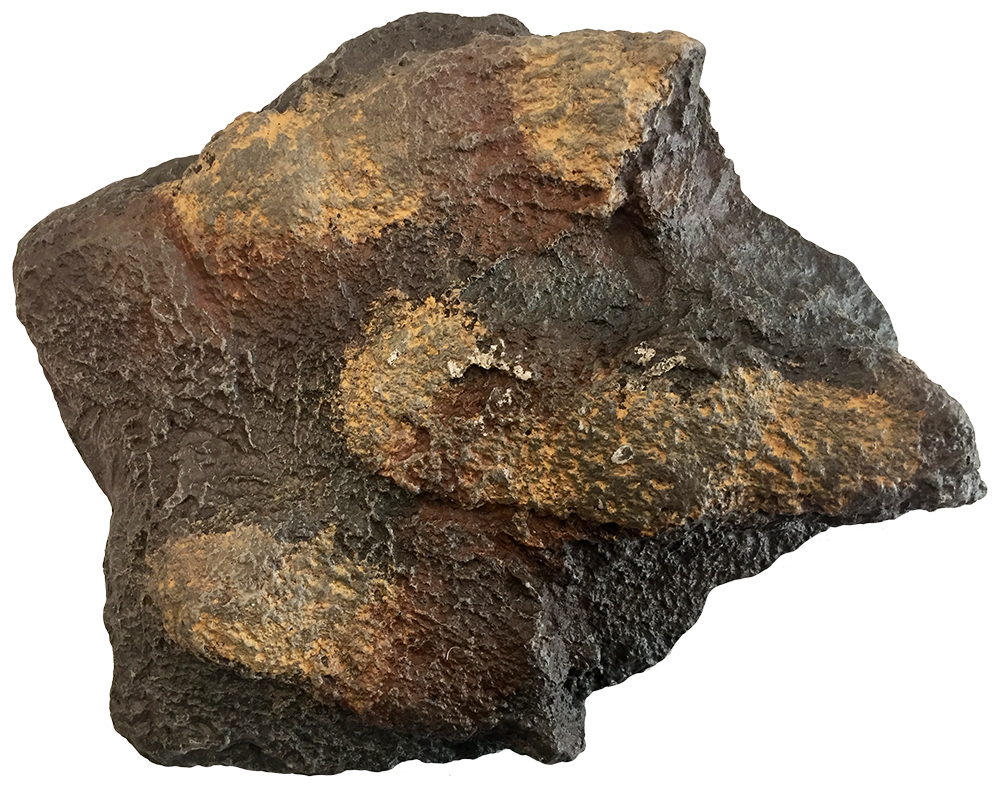
Eubrontes is the name given to large three-toed dinosaur tracks common in Late Triassic and Early Jurassic track sites. Because we can seldom definitively identify which animal left which track, we use a naming scheme that is specific to the track’s size and shape, rather than the supposed identity of a track’s maker. However, the shape of this track strongly suggests it belonged to a large predatory dinosaur. Based on its size, location, and Early Jurassic age, it may have been left by Dilophosaurus, one of the earliest big predatory dinosaurs (up to 7 m long) who was greatly misrepresented in the first Jurassic Park film.
Eubrontes tracks were first reported from the Connecticut River Valley of Massachusetts in 1802 but have since been found across Eurasia and Australia. In the Connecticut River Valley, they were among the first recognized non-avian dinosaur tracks, although they were discovered before dinosaurs were named as a group. First scientifically described by Edward Hitchcock of Amherst College, Eubrontes were originally interpreted to be bird tracks, long before birds were recognized as being dinosaurs.
Hitchcock coined the term Eubrontes in 1845. The name means ‘true thunder,’ as it was among the largest tracks present in the strata, so Hitchcock’s name evoked the supposed sounds made as the animal’s feet hit the ground. Bronte was a cyclops in early Greek mythology who forged Zeus’ thunderbolts and in later mythology was the goddess of thunder. The root word was also used by Othniel Marsh when he named Brontosaurus (‘thunder lizard’) and Brontotherium (‘thunder beast’).
This is a cast of a raised relief track, formed by sediment that filled the impression left by a dinosaur’s foot. In 1966, over two thousand Eubrontes tracks were found on a single layer of rock in Rocky Hill, Connecticut, which led to establishment of Dinosaur State Park, a registered National Natural Landmark. In 1991, the Connecticut state legislature named Eubrontes as their state fossil, the only named fossil track to become a state fossil. Although Massachusetts also uses unnamed ‘dinosaur tracks’ from the Connecticut River Valley as their state fossil.